Developing an understanding of and a collaborative approach with owner expectations for how AHUs is a best practice that facilitates project success and the long-term reliability of this infrastructure.
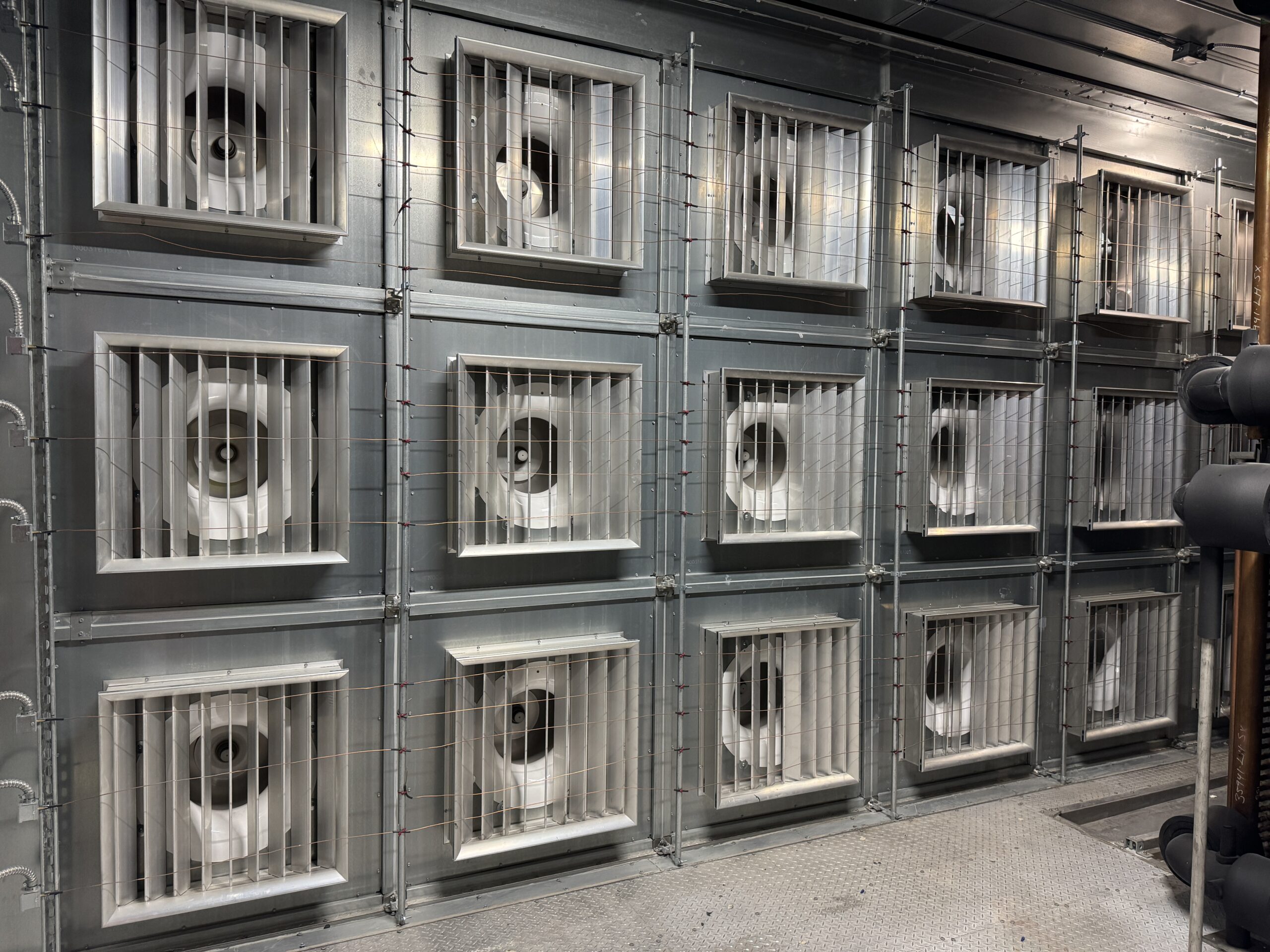
Learning objectives:
- Understand various air handling unit features considered to be essential by owners/operators for day-to-day operation.
- Identify what is required by owners/operators to properly maintain an air handling unit.
- Recognize that each owner/operator has their own unique requirements for operating and maintaining air handling units.
AHU insights:
- The Vanderbilt University Medical Center’s Facilities Management department standards serve as a case study for how engineers and building owners can work together for AHU best practices.
- AHUs must be designed and installed correctly to meet specific owner needs that are unique to each project.

When a new air handling unit (AHU) is installed, whether as a replacement in an existing facility or as part of new construction, building owners have specific expectations for this new component of their building’s infrastructure. Understanding these expectations is key to forging a positive partnership with owners and achieving project success.
Typically, owner expectations for air handling units revolve around two primary questions. First, was the AHU designed properly to meet owner needs? Secondly, was the AHU installed properly to meet the design intent? At a minimum, all owners expect AHU fan and coil capacities to meet building load demands and anticipate AHUs to fulfill their specified service lives with routine preventative maintenance. However, needs beyond this baseline can vary from owner to owner and project to project.
Because of this diversity, this article is not going to focus on outlining details of AHU construction, fan/coil sizing and configuration options. Instead, what better way to understand an owner’s expectations than understanding an owner’s perspective? Examining one owner’s processes, standards and expectations will serve as a useful reference when collaborating with other owners. So, let’s meet our owner representative.
An owner’s perspective
Vanderbilt University Medical Center (VUMC), located in Nashville, Tennessee, is a multi-building healthcare facility with nearly 200 large AHUs. VUMC works with AHUs ranging in airflow capacity from a few thousand cubic feet per minute (CFM) to hundreds of thousands CFM. These AHUs also vary in age from brand new to more than 50 years old.
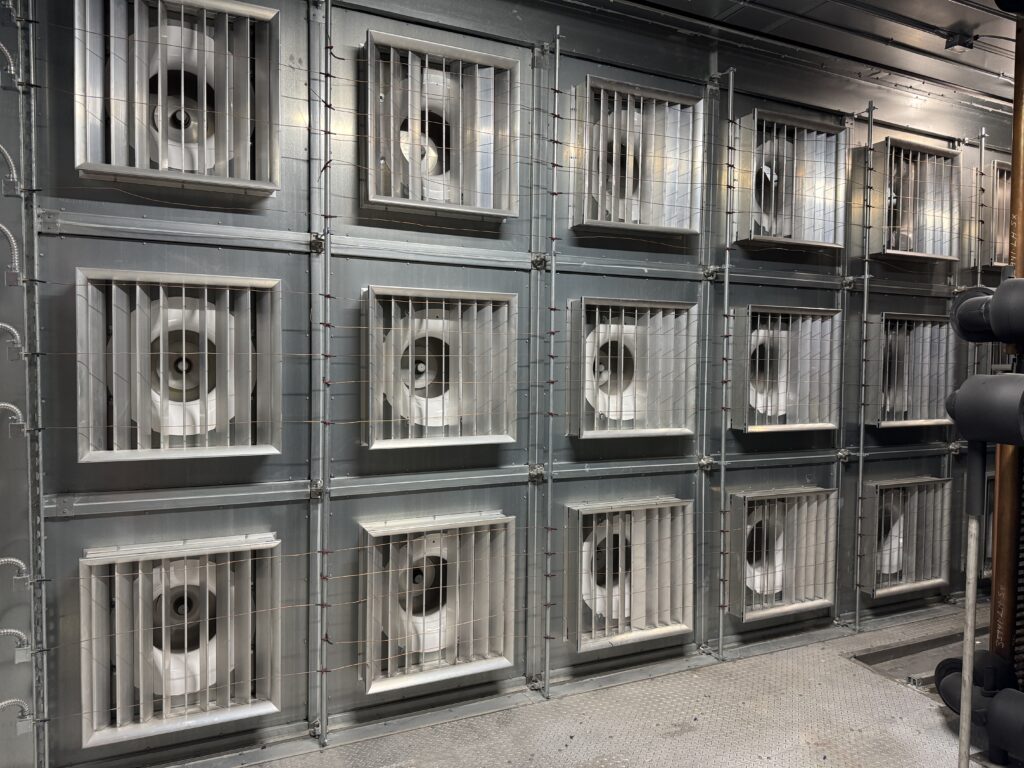
As with any healthcare facility, properly operating equipment is critical to the well-being of VUMC’s patients, visitors and staff. The building systems management group and the heating, air and refrigeration shop for the Department of Facilities Management at VUMC are responsible for the day-to-day operation of all the AHUs on the medical center’s campus.
Over the years, VUMC has developed and published standards to provide design engineers with an understanding of the general expectations for AHUs being provided for the medical center. Below are examples of day-to-day operation, routine maintenance and AHU essentials recommended and, in many instances, required by the VUMC Facilities Management department. With hundreds of central station AHUs being maintained daily across the campus, these examples and expectations are born from the facilities management department’s experience with a variety of conditions that help and hinder the operation and maintenance of AHUs.
AHU day-to-day operation essentials
Fan arrays
The VUMC Facilities Management department mandates that individual fans in an arrayed system be equipped with backdraft dampers to automatically prevent reverse spin. This precaution is crucial because de-energized fan motors that spin in reverse can generate voltage back to the motor’s variable speed drive, potentially causing it to fail. To maintain optimal performance, all fans, especially supply fans, in an arrayed system should operate without any individual fans in standby mode. If any supply fans in an array are de-energized, it can create an uneven velocity profile across the cooling coil, leading to moisture carryover.
VUMC also requires N-1 configuration fan redundancy for arrayed systems. This redundancy provides 100% capacity even with one fan offline, as all fans, including the standby fan, operate at a reduced speed during normal operation. For arrayed systems with redundancy, it is recommended that the design engineer schedule the quantity of fans and their design, minimum and maximum operating conditions (such as airflow and brake horsepower) to ensure that the AHU manufacturer fully understands the fans’ requirements when making their selections.
Return/outdoor air mixing
A common issue with AHUs in regions where winter outdoor air temperatures fall below freezing is insufficient mixing of the return air and outdoor air. This problem can lead to the tripping of freeze stats and frozen coils. Insufficient mixing is not limited to the heating season. During the cooling season, stratification can cause uneven temperatures across a cooling coil, potentially resulting in an undesired coil leaving air temperature.
The VUMC Facilities Management department has found that, regardless of how the return air and outdoor air are arranged in an AHU’s mixing section, complete de-stratification typically does not occur without the use of a dedicated mixer.
Humidifiers
The VUMC Facilities Management department prefers to position a humidifier within an AHU downstream of the pre-heat coil (if present) and upstream of the cooling coil. A cooling coil located downstream of a humidifier acts as an eliminator for any moisture not fully absorbed into the airstream. Conversely, placing humidifiers downstream of cooling coils can inadvertently trip smoke detectors, often leading maintenance personnel to limit humidifier output or shut them off altogether.
UV lights at cooling coils
To extend the life of ultraviolet (UV) light bulbs located at cooling coils, the VUMC Facilities Management department requires a control strategy that activates UV lights only when mechanical cooling with dehumidification is possible. A straightforward control strategy involves energizing the UV light when the outdoor air dry-bulb temperature is equal to or greater than the design cooling coil leaving air temperature, which guarantees that the coil will be irradiated when moisture is present. Alternatively, in systems where chillers that do not operate year-round provide the source of mechanical cooling, UV lights could be activated at the same outdoor air dry-bulb temperature at which the chillers are enabled.
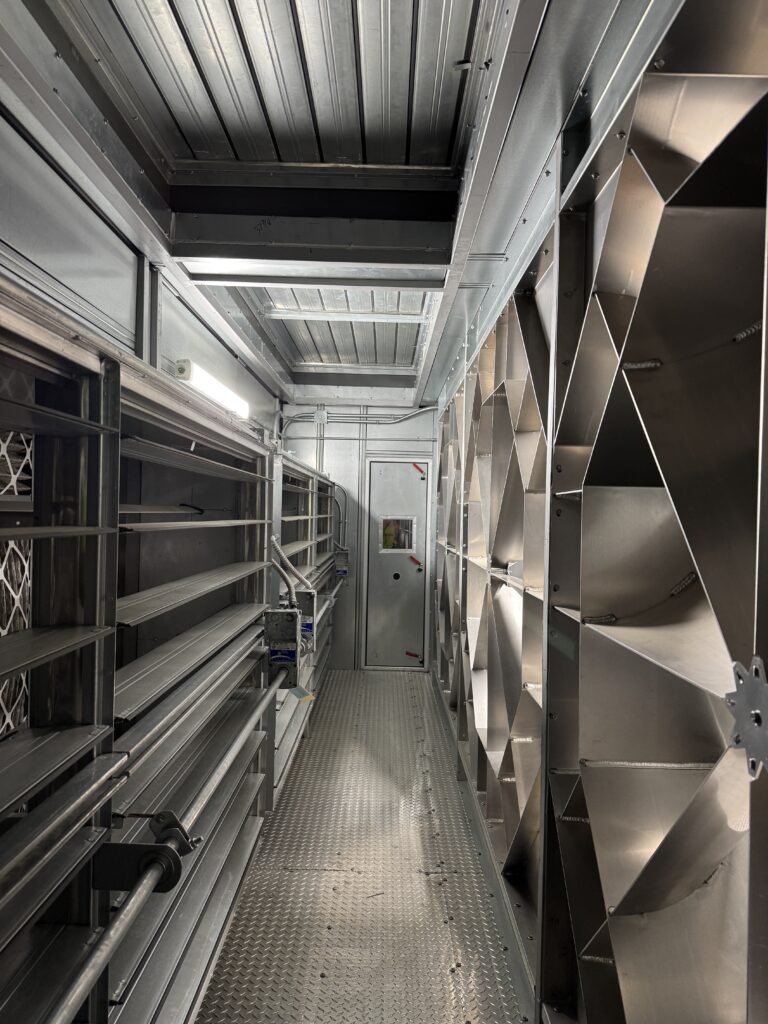
Hydronic coils (airside)
Regardless of how frequently the upstream air filters are changed, a coil will accumulate dirt over time. According to the ASHRAE handbook, “chilled-water coils with more than four rows and close fin spacing are virtually impossible to clean even using extraordinary methods.” It is common for AHUs with a high percentage of hot and humid outdoor air to require cooling coils with more than four rows. Eight rows with a fin density of ten fins per inch are typical high limits preferred by design engineers and building owners/operators. When cooling coils require more than four rows, a potential solution to the cleaning issue is to provide two coils in series with no more than four rows each. When calculating an AHU’s static pressure requirement, design engineers commonly account for filter loading, but they may overlook the increased pressure drop associated with ‘coil loading’. Failure to consider ’coil loading’ impacts not only the available motor power but also the proper operation of the cooling coil trap.
The VUMC Facilities Management department recommends that cooling coil trap depths be oversized to accommodate an increase in a coil’s airside pressure drop over time. When selecting and ultimately approving an air handling unit, the design engineer must consider the location of the cooling coil drain, as some manufacturers discharge through the unit’s base rail, which reduces the available trap height. Under such conditions, typical solutions are either providing a concrete pad of sufficient height or providing cut-outs in the floor near the trap.
Hydronic coils (waterside)
Maintaining clean hydronic coils is essential for both the air and water sides of the system. Sediment can easily become trapped in a coil’s piping system, significantly affecting its flow and ability to transfer heat. As indicated in most engineers’ hydronic coil connection details, the VUMC Facilities Management department requires strainers in the supply piping to the coil. The department prefers tapping branch piping feeding hydronic coils from the top, although side taps are also permitted. However, bottom taps are not allowed at the facility.
Controls
AHU controls should be kept as simple as possible. When controls become overly complicated or have too many variables, the maintenance group may resort to locking the unit into a manual override mode. This manual override would likely compromise the energy savings intended by the design engineer and, in many instances, required by code.
AHU maintenance essentials
Service clearances
The original fans and coils provided with a new AHU seldom, if ever, endure throughout the life of the unit, necessitating their replacement. As recommended by ASHRAE, “the room must have space for removing the fan(s), shaft(s), coils and filters. Installation, replacement and maintenance of this equipment should be considered when locating and arranging the room.” Unless the width of a coil bank is split into multiple sections, which requires staggering the coils and consequently adding length to the AHU, coils will typically have a width nearly equal to that of the unit. Providing adequate space to remove and replace coils is a mandatory requirement for the design engineer when laying out and sizing an AHU equipment room. More often than not, the “coil pull” space is contained within the equipment room itself. However, when limited space is available, coils are sometimes required to be pulled through doorways into adjacent spaces.
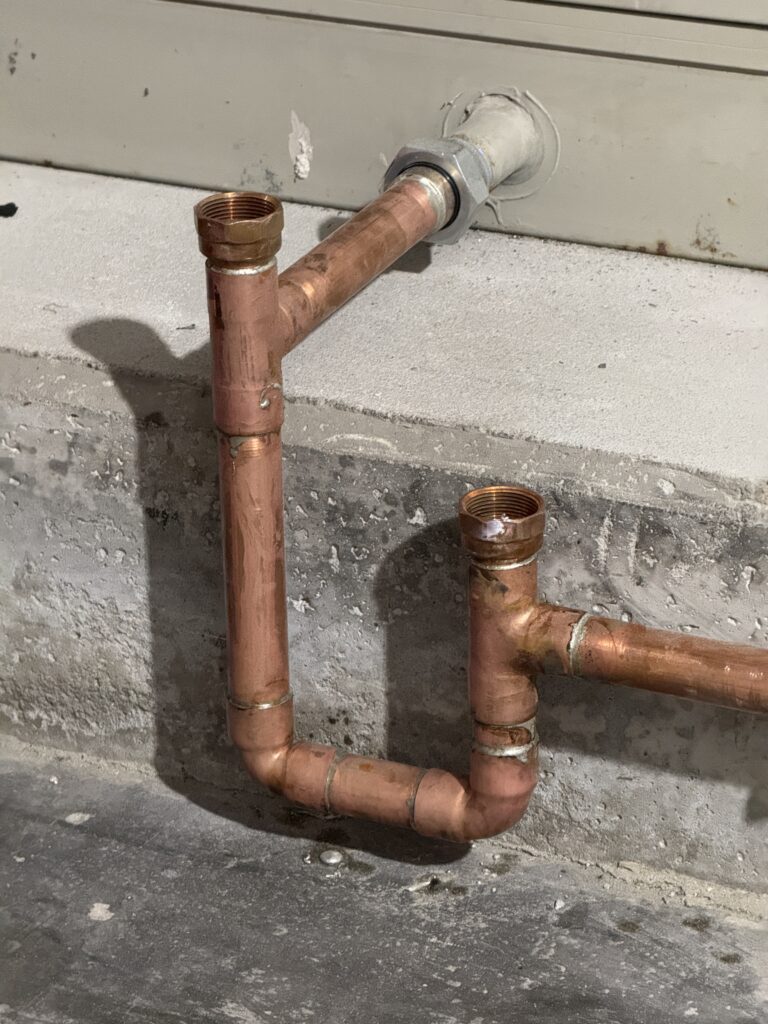
Interior access
With the fans and coils of AHUs located inside cabinets, access to the interior of the unit is essential. While side access filter housings, which eliminate the need to enter the unit to change filters, may be acceptable for smaller AHUs, there comes a point when it becomes necessary to “front load” the filter bank, requiring entry into the unit. When it is necessary to enter an AHU to service fans, clean coils or change filters, providing access sections and doors of sufficient size for a person to physically pass through is crucial. Although an AHU manufacturer may offer a 10-inch-wide access door, the average adult would have difficulty maneuvering through it. Access doors with a minimum width of 18 inches are recommended, with the VUMC Facilities Management department preferring 24-inch-wide access doors.
As previously mentioned, coils with more than four rows are difficult to clean, and attempting to do so from only one side of the coil virtually guarantees an insufficiently cleaned coil. VUMC requires access to both the upstream and downstream sides of any coil bank, but understands that unit length restrictions sometimes prohibit this.
Fan and fan motor replacement
While it is uncommon to replace fan wheels in an AHU, motors fail far more often than building owners and maintenance staff would prefer. Even though fan arrays have smaller motors than their single fan counterparts, replacing a fan motor is still often a challenging task.
Motor removal rails for fan array systems are required by the VUMC Facilities Management department. Additionally, the VUMC Facilities Management department does not permit non-standard or fractional-size motors, as replacement by maintenance personnel would likely involve using a readily available off-the-shelf motor not intended for the original service, leading to premature motor failure and higher maintenance costs.
Drain pans
Design engineers are fully aware that drain pans are necessary where wet conditions occur, such as during humidification and dehumidification. Although drain pans are typically not provided for heating coils, these coils still require cleaning, albeit not as intensely as cooling coils, since they usually have fewer than four rows. Spray washing a heating coil without a drain pan in place necessitates that maintenance staff vacuum the ponding water throughout the cleaning process. Therefore, drain pans are recommended at all coil locations.
Field observations
AHUs are typically equipped with a multitude of sensors that report to a building automation system (BAS), which then makes operational decisions based on the design control sequences. However, maintenance staff often need to make field observations of the AHU’s current conditions. Measurement devices intended for direct visual readings, such as pressure (both direct and differential) and temperature gauges, provide invaluable instantaneous information, including filter status, unit leaving temperature and coil entering and leaving conditions.
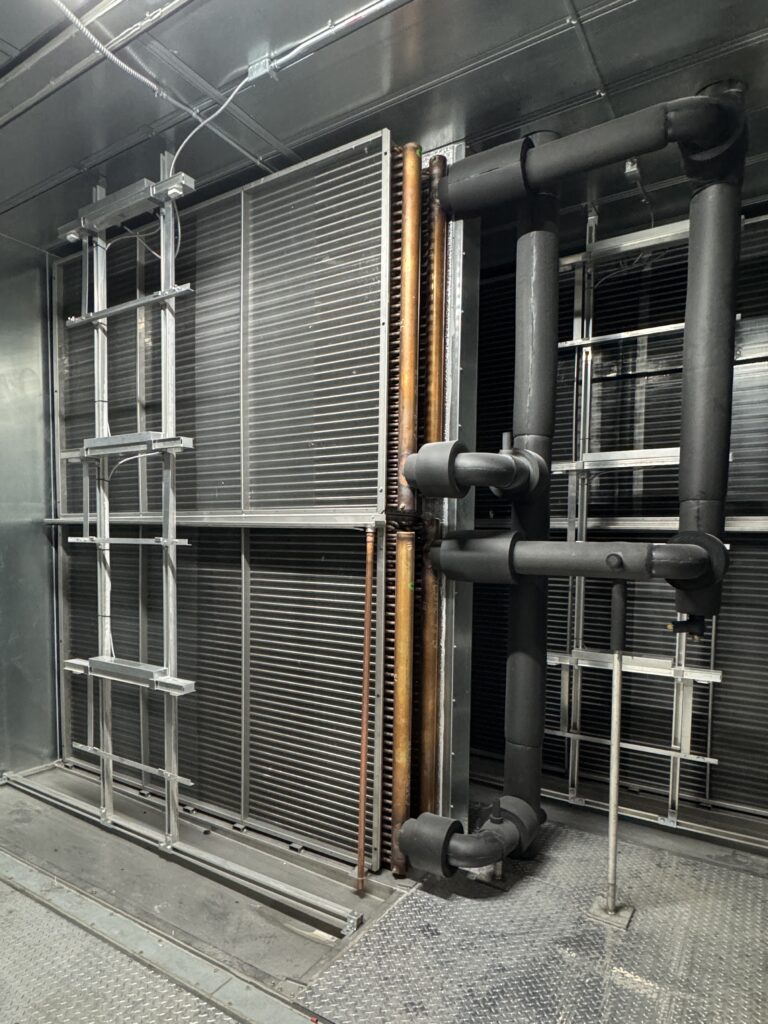
For example, while differential pressure across a filter bank is typically reported to the BAS, the VUMC Facilities Management department also requires magnehelic gauges to be provided across each filter bank. This allows maintenance staff to determine if the filters need changing without having to access the BAS.
A unified approach
The operation and maintenance of AHUs play a crucial role in ensuring the reliable functioning of facilities such as the Vanderbilt VUMC. Examining the VUMC Facilities Management department’s standards and expectations reinforces that a proactive, unified approach to AHU design, installation and maintenance not only meets the immediate cooling and heating needs of a building but also enhances the long-term health and safety of its occupants. By prioritizing the integration of robust operational strategies and a thorough understanding of owner expectations, we can foster successful collaborations between facility managers, designers and owners. Ultimately, the design and installation measures taken today contribute to the longevity and efficiency of AHUs, paving the way for a more efficient, reliable future in facilities.